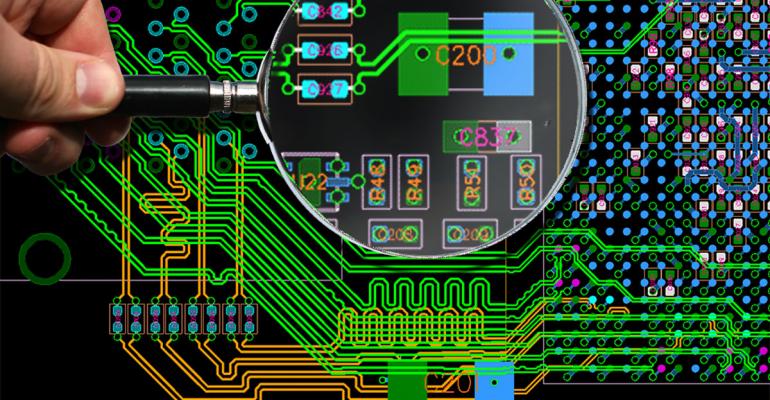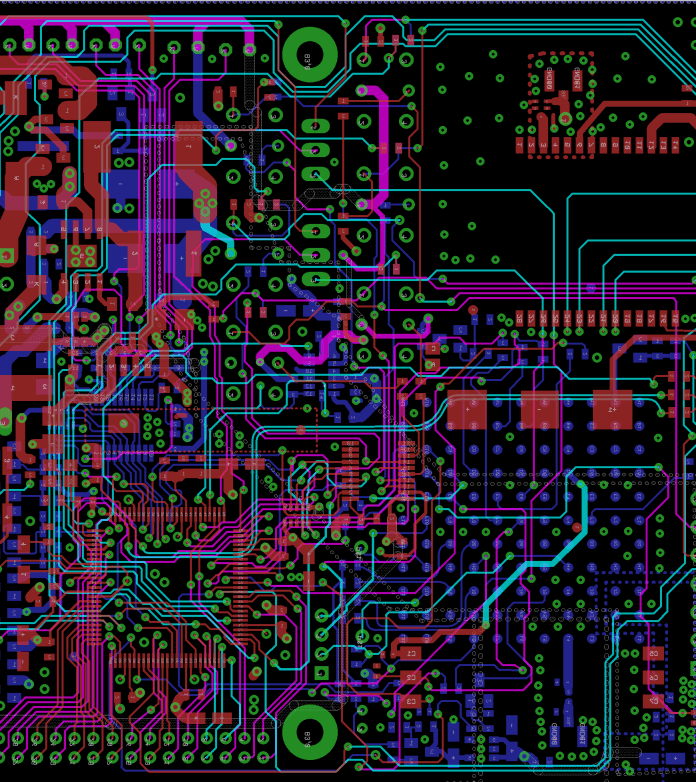Table Of Content

After setting the board design rules, you can start the placement process. If you’re new to the printed circuit design world, most modern PCB board design concepts will start with a 4-layer board on FR4, although you can define any number of layers you like in Altium Designer. You can also take advantage of the Materials Stackup Library; this lets you choose from a range of different laminates and unique materials for your printed circuit board.
Availability & Placement
With librepcb-cli it’s deadeasy to improve quality assurance (and to save time) by running theimportant checks & data exports in an automated, headless way – e.g.within a CI pipeline. In the context of PCBs, vias create an electrical connection between layers in the PCB. Basically, a via is a conductive hole that has copper pads on each layer. Heat can also be dissipated from a component by using thicker copper traces.
PCB Layout Capabilities
Some of our products- LilyPad boards and Arudino Pro Micro boards- use a 0.8mm thick board. A PCB is sort of like a layer cake or lasagna- there are alternating layers of different materials which are laminated together with heat and adhesive such that the result is a single object. An integrated PCB editor along with real-time connection to multiple domains. An easy-to-use tool that guides you through successively more advanced PCB designer tasks.
Complete Placement Before Routing

Add to that a vibrant design community, extensive knowledge base, design webinars, blogs written by experts, and an extensive PCB design tutorial, and Altium Designer helps set you on the path to success. Larger circuits can be difficult to design on a single layer PCB because it’s hard to route the traces without intersecting one another. You might need to use two copper layers, with traces routed on both sides of the PCB.
As design complexity increases, the efficiency of single-layer PCBs decrease. Highly complex PCB designs call for double-layer, triple-layer, or multi-layer PCBs. For teams or individuals designing electronic products who are looking for efficient ways to collaborate and manage their data flows. The Loop Removal feature will automatically remove any redundant track segments, including vias.

PCB Design Basics for New Designers
DipTrace is license based with quite a few buying options, the cheapest of which is the DipTrace starter at $75, which include 300 pins and 2 signal layers. Students and educational institutions can get DipTrace Lite (capped at 500 pins and 2 signal layers) for free. Upverter is a browser-based program that’s mainly aimed at introducing students to the PCB design. Electronics and PCB design can be complex, but Upverter aims to simplify the process, starting with one of the simplest and cleanest user experiences and UIs out there. It’s also modular with a drag and drop design, making it intuitive for beginners with no prior knowledge of the subject. Zachariah Peterson has an extensive technical background in academia and industry.
Vectorscope KiCad Redrawing Project - Hackaday
Vectorscope KiCad Redrawing Project.
Posted: Mon, 13 Nov 2023 08:00:00 GMT [source]
It offers real-time design insights, including route, placement, coupling, and impedance analysis, to help speed up prototype to production. These helpful tools remove the need to perform post-design DFM checks which can end up causing much more work if errors are spotted after the design process. Under the hood, it houses all the functionality you’d expect – schematics, PCB design, 3D viewer, automated routing, and collaboration tools.
Complete Guide to PCB Design For Beginners
The following sections define what can be done with connection lines through non-graphical editing. Connection lines are the visual representation of the logical connectivity between net objects. Each of these lines, connecting one pin in a net to another pin in the net, is called a From To.
The ground plane can act as a large heat sink that then transports heat evenly throughout the board. Therefore, if a particular via is connected to a ground plane, omitting the thermal relief pads on that via will allow heat to conduct to the ground plane. However, this can create a problem if through-hole components are assembled on the board using wave soldering as you need to keep heat trapped near the surface. For traces that don't need specific impedance or high current, a 10 mil trace width is fine for the vast majority of low-current analog and digital signals. Printed circuit board traces that carry more than 0.3 A may need to be wider.
Altium also gives everyone access to their knowledge base through their website. The technical documentation for Altium Designer includes many thoroughly explained examples to help you use design tools. Simply search the knowledge base for a function in the program, and you’ll have instant access to complete tool information and PCB design tutorials. If you need a PCB design tutorial to help you get up to speed quickly, you’ll have access to a variety of resources you need to be successful. The resources listed below contain PCB routing tutorials, guides on how to use PCB design tools, and much more. Anyone can access Altium’s knowledge base, blogs, webinars, and more for free.
Siemens' Cloud Enabled version provides an end-to-end system design solution with integrated design data management, component research, and real-time component sourcing knowledge. The Result provides for maximum component placement/routing density achievable, optimum electrical performance and efficient, high yield, and defect free manufacturing. When you submit a design, you also need to have the right board size, trace width, materials, component placement, and tolerances. Plus, in the case of flex, you’ll need to determine whether the design is static, partly flexible, or dynamic.
Prior to placing components you should define the PCB layout (i.e. shape, layer stackup) using the Layer Stackup Manager, shown below. Verify the changes (addition of the SchDoc information to the project without error) by clicking on the Validate Changes tab. If the status for all items is green, then click on the Execute Changes tab. Altium Designer can save you a substantial amount of time during this PCB design step. For high-speed components, it is essential to place them at the interface with the shortest path to other high-speed components or interface pins. The connection between the shielding ground and the actual ground plane is of utmost importance.

No comments:
Post a Comment